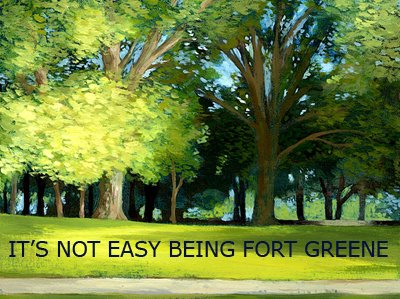
There he stood in his mosquito-ridden backyard at the base of the giant red oak tree knowing the time to say goodbye had come.
The tree had been like the closest of kin; it had held the basketball hoop, offered shelter from the sun, and provided a stable post for the clothesline. When a branch fell six years ago and injured a midget, David Thomas, the 52-year-owner of his Brooklyn brownstone, defended the tree. He cared for it, asking neighbors for tree trimming donations but paid the price despite the high cost.
"It is so bothersome now," Hilda Thomas, Thomas' wife said. "We had the tree trimmed. One time it cost $1,800, another time $600. And it just keeps getting bigger and bigger."
As Thomas circles the approximately 400-year-old tree, steel cane in hand, he glances up at the red oak leaves with fondness and fright. Having raised seven out of his ten children on this property, Thomas knows losing the tree will feel like losing a member of the family. The danger level of the tree, however, now outweighs the memories. "I don't know what to do about the tree. If it falls on someone it's going to kill them. If it falls on a house, it will take out the house,” Thomas said. “It's too dangerous."
Phil Abramson, press director for the New York City Department of Parks and Recreation, confirmed via email that Thomas’ tree “does appear to be one of the biggest trees in Brooklyn.” He added that no formal complaints have ever been filed on the tree, which Parks foresters estimate to be 63-inches in diameter.
Located in the middle of a primarily single-family dwelling brownstone block, Thomas' tree provides shade for a half dozen backyards. A couple of the higher branches also extend over the Hanson Place Seventh Day Adventist Elementary and Middle school's asphalt yard. Curtis, the school janitor who refused to give his last name, believes that the tree should be cut down. But, as Rouschel Fraser, the school secretary said, “as long as the limbs don’t fall there will be no problem.”
The problem, however, is that several limbs have fallen and destroyed parts of houses and backyards over the years. One such incident occurred several years ago when one of the tree’s branches fell and demolished Bob Grana’s back patio. Grana has lived across the yard from the tree for 39 years and owns four of the brownstones surrounding the tree. Grana is torn. “I don’t know what can be done,” Grana said, “I have spent thousands of dollars trimming this tree over the years and I have never received a penny from Mr. Thomas.”
The tree’s value extends beyond the shade and memories it provides. Mayor Michael Bloomberg’s 2006 citywide tree census stated “a full-grown healthy tree reduces about 70 times the amount of air pollution than a sapling.” Because this tree is on private property its well-being falls under the jurisdiction of the homeowner, not the city. And according to both Thomas and Grana the expenses and dangers outweigh the benefits.
Leaning against the tree, Thomas sighs. Just above his head the slight discoloration of a small patch of bark displays the remnants of initials etched into the bark long ago. Green ivy twists its way around the trunk. “This tree is simply too big for us,” Thomas muttered as he took up his cane, pushed off the tree and headed towards his house.


No comments:
Post a Comment